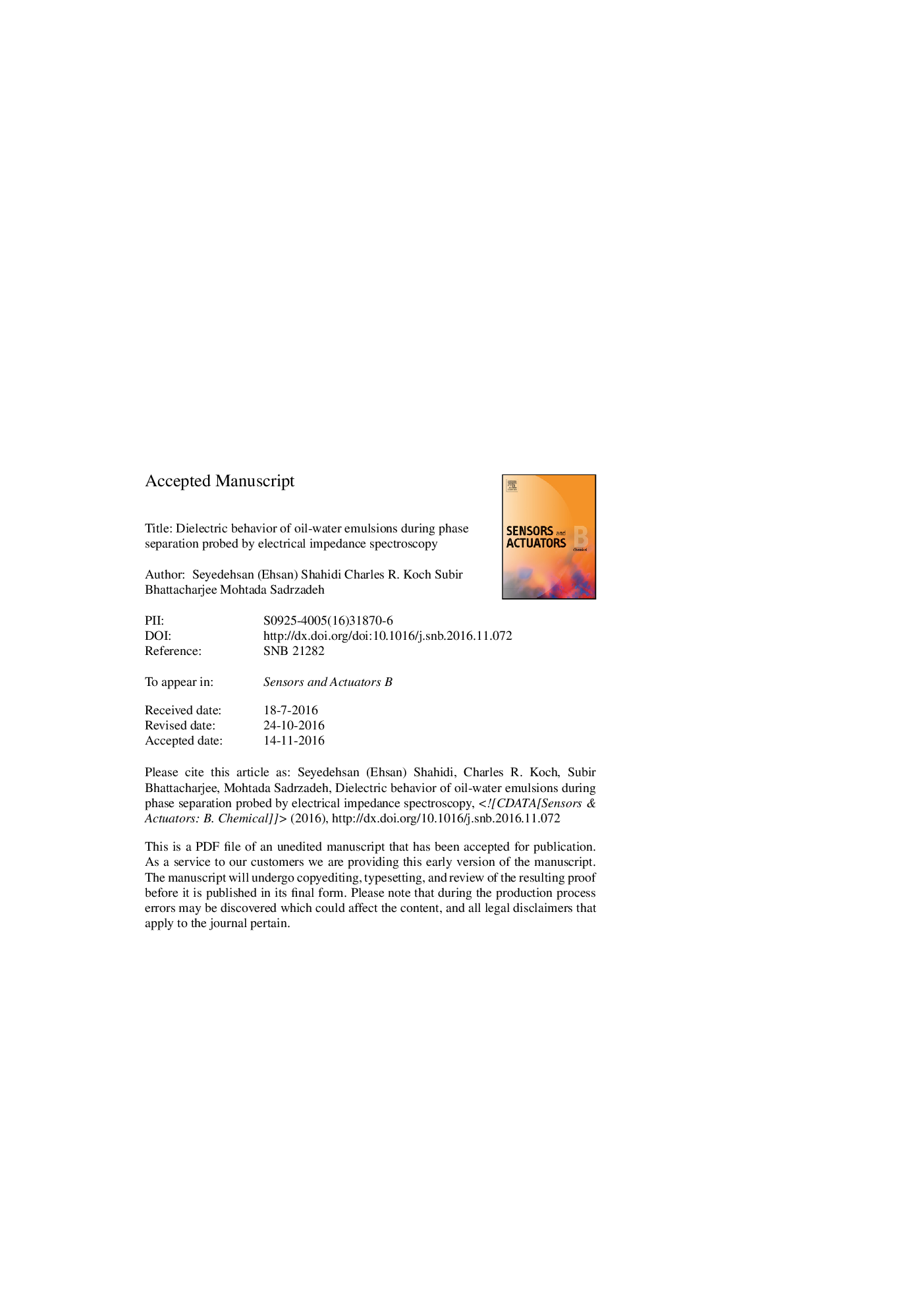| Article ID | Journal | Published Year | Pages | File Type |
|---|---|---|---|---|
| 5009500 | Sensors and Actuators B: Chemical | 2017 | 9 Pages |
Abstract
Electrical impedance spectroscopy (EIS) is applied to studying the stability and phase behavior of oil-water emulsions. The method involves EIS on 500-μm-thick samples of emulsions in a parallel-plate capacitor test cell. The frequency response data is fitted to an equivalent circuit model to estimate the electrical impedance of the samples. The technique is used for investigating the capacitance and resistance of emulsions during phase separation. A theoretical explanation based on the capacitance of the emulsion layer is provided to understand the reason behind the variation in the dielectric constant of the samples during phase separation. It is observed that creaming and sedimentation can be captured as a permittivity decay, so permittivity measurements can be utilized to sense phase separation. The technique is shown to be more effective for oil-in-water emulsions rather than water-in-oil ones.
Related Topics
Physical Sciences and Engineering
Chemistry
Analytical Chemistry
Authors
Seyedehsan (Ehsan) Shahidi, Charles R. Koch, Subir Bhattacharjee, Mohtada Sadrzadeh,
